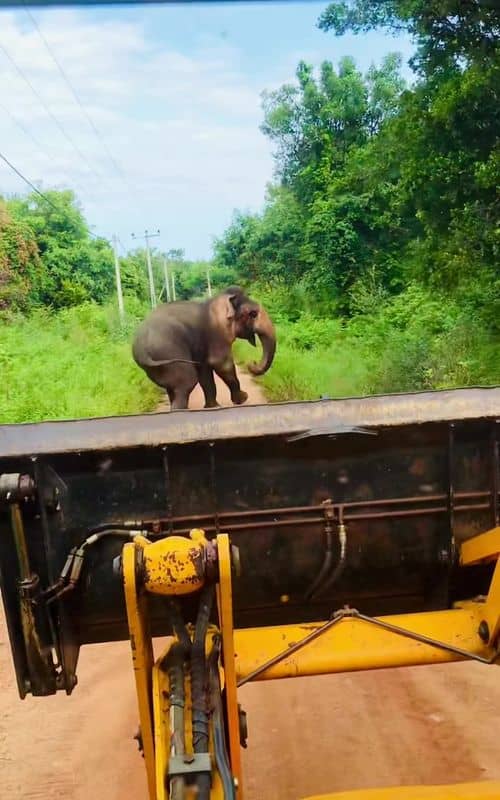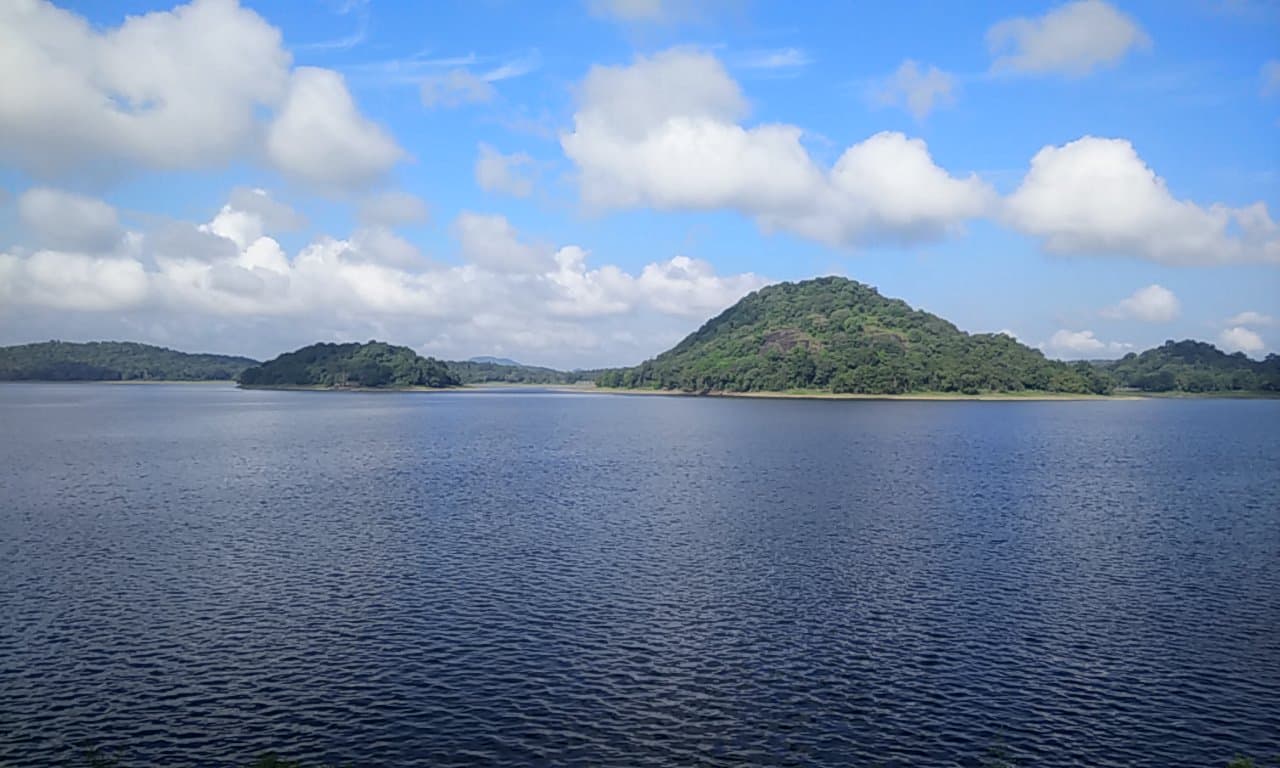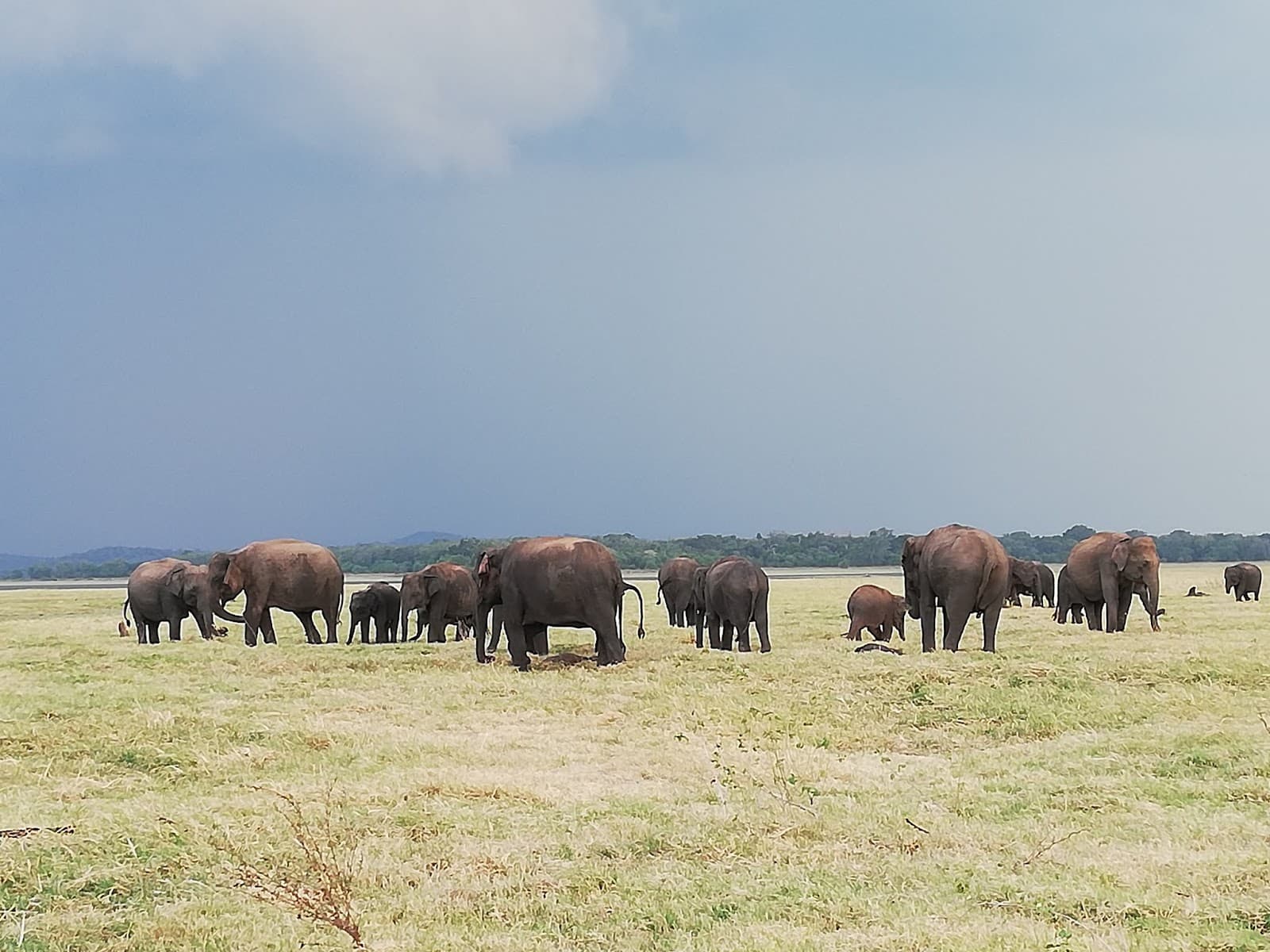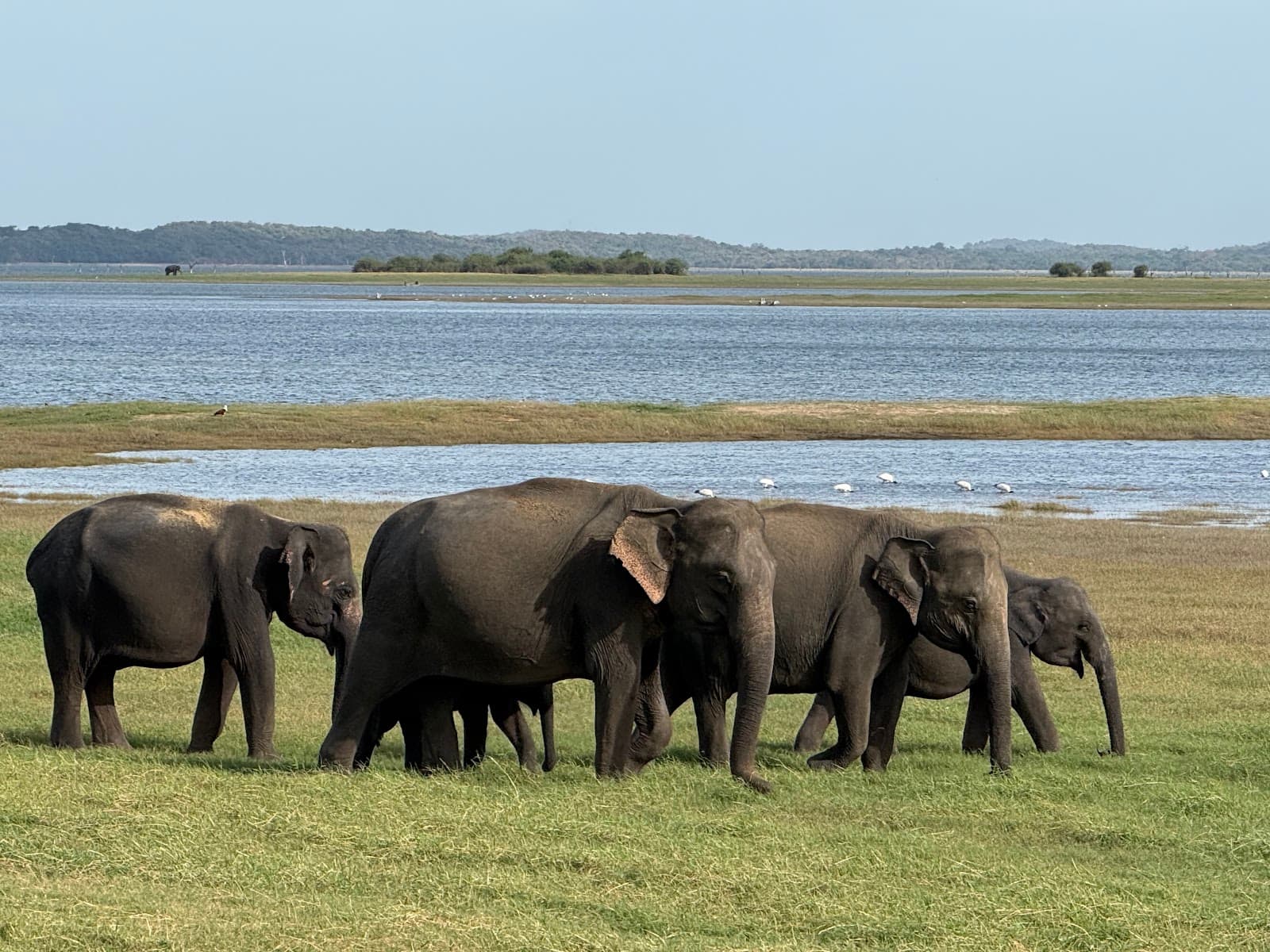
Medirigiriya Vatadage
A stunning circular shrine from Sri Lanka's ancient kingdoms, showcasing intricate stone carvings and serene Buddha statues.

Highlights
Must-see attractions

Social
From TikTok & Reddit
Best Time
Cooler temperatures & fewer visitors

Medirigiriya Vatadage
Best Time
Cooler temperatures & fewer visitors

Highlights
Must-see attractions
A stunning circular shrine from Sri Lanka's ancient kingdoms, showcasing intricate stone carvings and serene Buddha statues.
"A calm and historical place, perfect for witnessing ancient architecture without the crowds."

Dress Modestly
Cover shoulders & knees. It's a sacred site! :pray:
Visit Early or Late
Beat the heat & crowds. Perfect for photos! :camerawithflash:

Highlights
Discover the most iconic attractions and experiences

The Vatadage Structure
Central Courtyard
A magnificent circular shrine, an architectural marvel housing a stupa and four serene Buddha statues.

Intricate Stone Carvings
Platforms and Entrances
Marvel at the detailed sandakada pahanas (moonstone carvings) and other ancient stone artistry.

Surrounding Monastic Ruins
Outer Areas
Explore remnants of stupas, a medicine trough, and other ancient structures offering a glimpse into monastic life.
Plans like a pro.
Thinks like you
Planning Your Visit
Beat the Crowds & Heat
Respectful Attire & Entry
Best Times
Insider Tips
from TikTok, Instagram & Reddit
Dress Modestly
Cover shoulders & knees. It's a sacred site! :pray:
Visit Early or Late
Beat the heat & crowds. Perfect for photos! :camerawithflash:
Explore the Surroundings
Don't miss the smaller ruins & carvings. :magnifyingglasstilted_right:
Watch for Deer
Visit around 5-6 PM for a chance to spot deer. :deer:
Tips
from all over the internet
Dress Modestly
Cover shoulders & knees. It's a sacred site! :pray:
Visit Early or Late
Beat the heat & crowds. Perfect for photos! :camerawithflash:
Explore the Surroundings
Don't miss the smaller ruins & carvings. :magnifyingglasstilted_right:
Watch for Deer
Visit around 5-6 PM for a chance to spot deer. :deer:
Free Entry, Small Fee
Entry is free, but there's a small parking fee. :parking:
What Travellers Say
Reviews Summary
Visitors praise Medirigiriya Vatadage for its well-preserved architecture, serene atmosphere, and free entry. It's noted as a less crowded alternative to other historical sites, offering a peaceful experience. Some find the terrain challenging for those with mobility issues.
"The Polonnaruwa Vatadage is an ancient structure dating back to the Kingdom of Polonnaruwa of Sri Lanka. It is believed to have been built during the reign of Parakramabahu I to hold the Relic of the tooth of the Buddha or during the reign of Nissanka Malla of Polonnaruwa to hold the alms bowl used by the Buddha. Both these venerated relics would have given the structure a great significance and importance at the time. Located within the ancient city of Polonnaruwa, it is the best preserved example of a vatadage in the country, and has been described as the "ultimate development" of this type of architecture. Abandoned for several centuries, excavation work at the Polonnaruwa Vatadage began in 1903.
Built for the protection of a small stupa, the structure has two stone platforms decorated with elaborate stone carvings. The lower platform is entered through a single entrance facing the north, while the second platform can be accessed through four doorways facing the four cardinal points. The upper platform, surrounded by a brick wall, contains the stupa. Four Buddha statues are seated around it, each facing one of the entrances. Three concentric rows of stone columns had also been positioned here, presumably to support a wooden roof. The entire structure is decorated with stone carvings. Some of the carvings at the Polonnaruwa Vatadage, such as its sandakada pahanas, are considered to be the best examples of such architectural features. Although some archaeologists have suggested that it also had a wooden roof, this theory is disputed by others.
Theories vary among archaeologists and historians regarding who built the Polonnaruwa Vatadage, and when. One such theory suggests that it was built by Parakramabahu I during his reign in the 12th century.
The Culavamsa, an ancient chronicle, mentions that he built a circular stone shrine to hold the tooth relic of the Buddha. Archaeologist Harry Charles Purvis Bell believed that this shrine is the Polonnaruwa Vatadage. This is contradicted by several ancient sources of the island, including Rajavaliya and Poojavaliya, which mention that it was built by Nissanka Malla. However, according to the studies of Arthur Maurice Hocart, Nissanka Malla only renovated an already existing building and made some additions such as the entrance and outer porch. Wilhelm Geiger, who translated the ancient Mahavamsa, and historian H. W. Codrington both agree with this theory.
A nearby stone inscription set by Nissanka Malla lists the Vatadage among his constructions. In this, he claims that it was built by one of his generals under his own direction.
A unique feature of architecture of ancient Sri Lanka,
vatadages were built for the protection of small stupas that had an important relic enshrined in them or were built on hallowed ground.
If the Polonnaruwa Vatadage is the shrine built by Parakramabahu I, the relic of the tooth of the Buddha would have been enshrined within it.
Another possibility is that the alms bowl used by the Buddha may have been enshrined here.
Both these relics were important objects in ancient Sri Lankan culture, and would have made the Polonnaruwa Vatadage one of the most significant and venerated buildings in the country.
Polonnaruwa was abandoned in 1215 following an invasion from the Eastern Ganga Dynasty invader Kalinga Magha.
The Polonnaruwa Vatadage appears to have been abandoned with the fall of the kingdom, and there is no mention of it in the chronicles in later periods. It was not until 1903 that the Department of Archaeology began excavation work at the site under Bell, who noted that it was "only a mound of earth" at the time.
The Polonnaruwa Vatadage is located in a quadrangular area known as the Dalada Maluva in the ancient city of Polonnaruwa. The Dalada Maluva contains some of the oldest and most sacred monuments of the city.
The Polonnaruwa Vatadage, which occupies most of the south western area of it, is a prominent structure among them. It is the best preserved example of a Vatadage in the country,"
Rev Ehalepola Thanhankara Thero (පූජ්ය ඇහැලේපොල තණ්හංකර හිමි)
"Medirigiriya Vatadageya is a stunning archaeological site showcasing the architectural beauty of Sri Lanka’s ancient Anuradhapura period. The site is well-maintained and free to enter, with only a small parking fee required. The centerpiece is the well-preserved vatadage, featuring concentric stone columns and four seated Buddha statues at its center, offering a serene and spiritual ambiance.
The surrounding area includes remnants of a monastic complex, such as small stupas, a medicine trough, and ancient stone carvings, providing a glimpse into the rich history of this location. Its peaceful environment and historical significance make it a must-visit spot, especially for history enthusiasts and photographers."
Gayan Perera
"Calm and historical place but visit during 5-6p.m to see deer."
Rusiru Thiwanka
What People Like
What People Dislike
Frequently Asked Questions
🚇 🗺️ Getting There
Medirigiriya Vatadage is about an hour's drive from Polonnaruwa. You can hire a taxi or tuk-tuk for a convenient journey. Some travelers mention it's less touristic than Polonnaruwa itself, making it a worthwhile detour.
Public transport options might be limited and time-consuming. Hiring a private vehicle or joining a tour is generally recommended for ease of access and flexibility.
For exploring Medirigiriya Vatadage and other sites in the Polonnaruwa district, hiring a car with a driver or a tuk-tuk for the day offers the most flexibility.
The roads leading to Medirigiriya are generally well-maintained, but can be narrow in rural areas. Enjoy the scenic drive through the Sri Lankan countryside.
Yes, Medirigiriya Vatadage is often visited as part of a broader tour of the Polonnaruwa region, which includes the ancient city of Polonnaruwa and other historical sites.
🎫 🎫 Tickets & Entry
Entry to Medirigiriya Vatadage is free. There might be a small fee for parking your vehicle.
The site is generally open from early morning until late afternoon. It's best to visit during daylight hours for exploration and photography.
No advance booking is required as entry is free. You can visit at your convenience during opening hours.
Yes, as it's a sacred Buddhist site, visitors are advised to dress modestly, covering shoulders and knees.
Photography is generally allowed, but it's always respectful to avoid intrusive shots, especially of any religious ceremonies or individuals. Drone usage might be restricted.
🎫 🧭 Onsite Experience
The main attraction is the remarkably well-preserved Vatadage, a circular shrine with concentric stone columns, four seated Buddha statues, and a central stupa.
Wear comfortable walking shoes as there are stone steps and uneven paths. Modest clothing covering shoulders and knees is essential.
The site involves climbing stone steps and navigating uneven terrain, which can be challenging for the elderly or those with mobility issues.
Basic facilities might be limited. It's advisable to carry your own water and use restrooms before arriving at the site.
Early morning or late afternoon offers the best light for photography, with softer shadows and a more serene atmosphere. The golden hour around sunset can be particularly beautiful.
📸 📸 Photography
The central Vatadage structure, especially with the Buddha statues, is a prime spot. Capture the intricate stone carvings and the surrounding monastic ruins.
Drone usage might be restricted or require special permits. It's best to check local regulations before flying a drone.
Midday sun can be harsh. Early morning and late afternoon provide softer, more flattering light. Consider the direction of the sun when planning your shots.
Focus on the detailed sandakada pahanas (moonstones), the seated Buddha statues, and the concentric columns of the Vatadage.
Use a tripod for stability in low light. Consider a wider aperture for depth of field or a narrower one for capturing intricate details. Experiment with different angles to showcase the scale and history.
For Different Travelers
Tailored advice for your travel style
👨👩👧 Families with Kids
To make the visit more enjoyable, consider visiting during the cooler parts of the day, like early morning or late afternoon. Bringing plenty of water and snacks is recommended, as facilities are limited. The chance to spot deer in the late afternoon can be a highlight for children.
🚶 Solo Travelers & Backpackers
Consider hiring a tuk-tuk for the day to explore Medirigiriya and other nearby sites in the Polonnaruwa region. This allows for flexibility and a chance to interact with local drivers, who can often share interesting insights. Weekdays are ideal for a truly tranquil visit.
🏛️ History Buffs & Archaeology Enthusiasts
Take your time to examine the intricate stone carvings, particularly the sandakada pahanas, and the layout of the monastic complex. Researching the different theories about its construction and historical significance beforehand can greatly enhance your appreciation of the site.
Deep Dives
In-depth insights and expert knowledge
The Architectural Marvel of the Vatadage
The craftsmanship evident in the stone carvings is exceptional. The sandakada pahanas (moonstone carvings) found at the entrances are considered some of the finest examples in Sri Lanka, depicting intricate floral motifs and mythical creatures. These carvings not only add to the aesthetic beauty but also hold symbolic meaning within Buddhist cosmology. The overall design reflects a sophisticated understanding of engineering and artistry from the Anuradhapura and Polonnaruwa periods.
While the exact construction date is debated, it's believed to have been built or significantly renovated during the Anuradhapura or Polonnaruwa eras, with some theories attributing it to King Aggabodhi IV or King Nissanka Malla. Its historical significance is tied to its role in housing important relics, making it a key religious site in ancient Sri Lanka.
Exploring the Historical Context
The abandonment of Polonnaruwa in the 13th century following invasions led to many of its magnificent structures falling into disrepair. Medirigiriya Vatadage, like other sites, was eventually reclaimed by nature. Excavation and restoration efforts began in the early 20th century, revealing the architectural splendor that had been hidden for centuries. The Department of Archaeology in Sri Lanka plays a crucial role in preserving and managing this historical treasure.
Visiting Medirigiriya offers a chance to step back in time and appreciate the architectural ingenuity and spiritual devotion of ancient Sri Lankan civilizations. It provides a less crowded alternative to some of the more famous historical sites, allowing for a more personal and reflective experience.
Photography Tips for Medirigiriya Vatadage
Don't overlook the details. The sandakada pahanas (moonstone carvings) are exquisite and deserve close-up shots. Explore the surrounding monastic ruins, including smaller stupas and stone remnants, to provide context and tell a more complete story of the site. Look for interesting angles and perspectives that highlight the scale and age of the ruins.
Consider using a tripod for sharper images, especially during the golden hours when light levels might be lower. Be mindful of the weather; mist can add a dramatic effect, as seen in some drone footage, while clear skies offer bright, crisp shots. Remember to dress respectfully, as this is a sacred site, and avoid intrusive photography.






Social
from TikTok, Instagram & Reddit